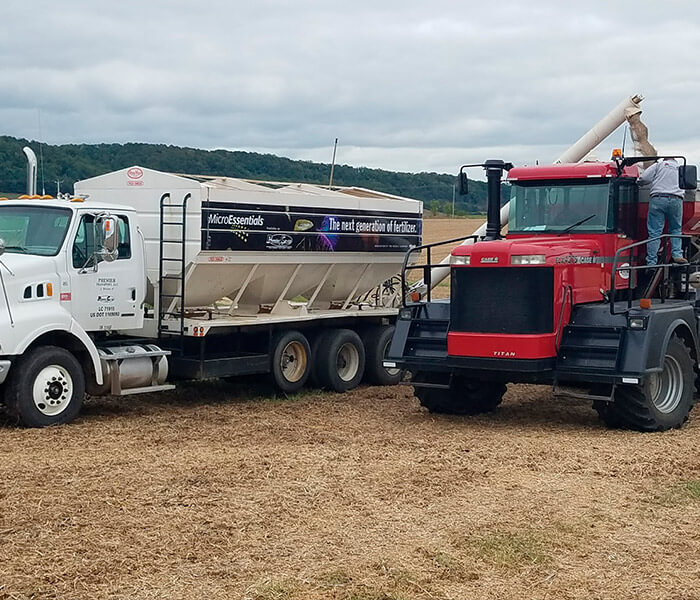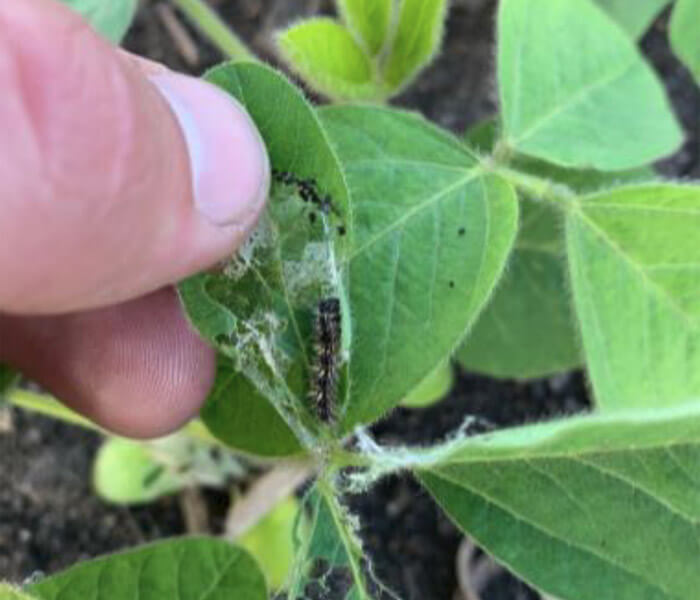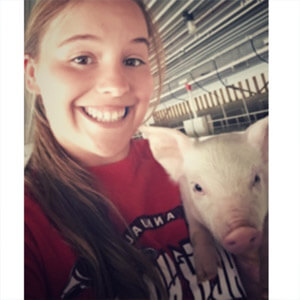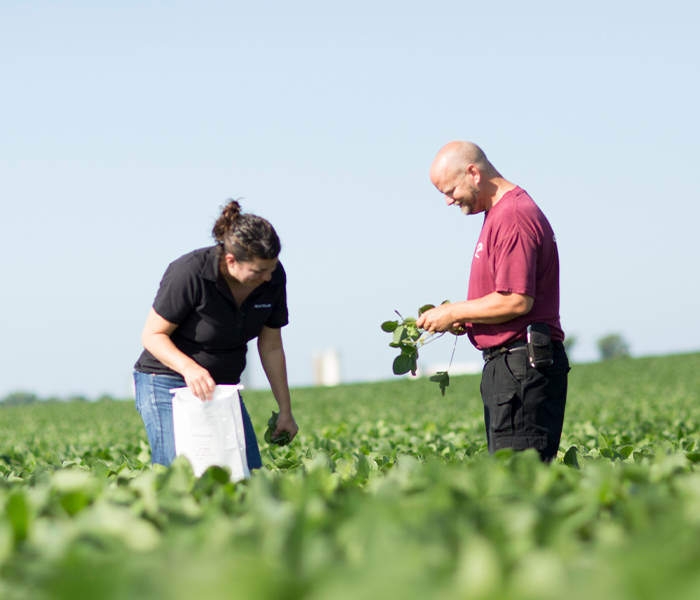Importance of Late Season Scouting
The sprayers out in the field are slowly rolling to a halt, while harvest equipment is starting to be greased up and ready to go. In the midst of all this, our fields tend to get placed on the back burner, when they should really be the stars of the show. This time of year, the more time you invest in your fields the more knowledge and insight you can gain for this year’s harvest and future cropping seasons.
Whether you're growing corn and/or beans there are four key things to look for while out in the field.
1. Disease
Knowing the disease pressure out in your field can prepare you for harvest and making management decisions for next year's crop. Knowing the disease severity prior to harvest can allow you to create a harvest plan that takes into consideration fields that may be drier than others, or have weaker stalks. It also gives you insight on the potential inoculum that may overwinter on residue, allowing you to make tillage decisions.

Photo Courtesy of Tryston Beyrer, Winfield United
This information can also assist with hybrid/variety selections. Knowing the sort of disease that may appear again in following years, decisions can be made based on disease tolerance. For soybeans, a discussion around seed treatments can be had to fight certain diseases that strike early.
2. Insect Damage
Insects are one of the very few problematic issues we may still be able to overcome this late in the game. With heavy infestation, a rescue pass may be warranted to protect yield. We should not only be out there looking for insects, but knowing the damage they may cause can give you harvest expectations. Fields with insect damage may become lodged adding to the difficulty of harvest. Fields with Corn Rootworm feeding may need to be harvested first due to plant standability.
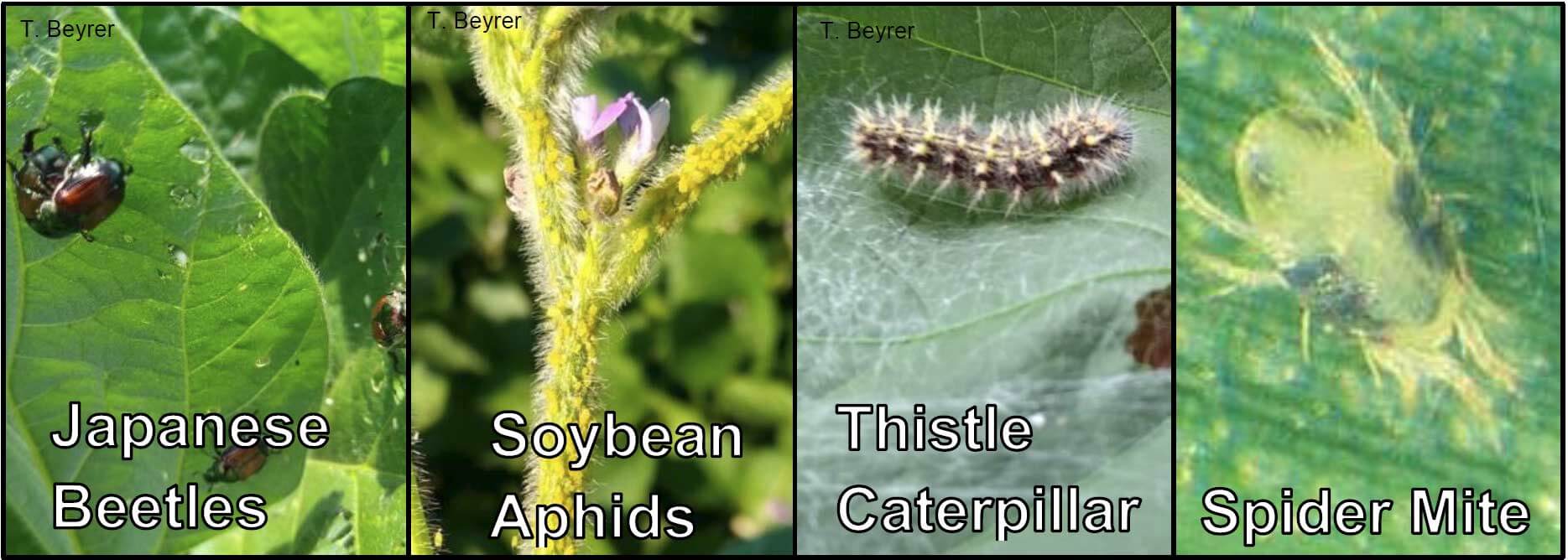
Photo Courtesy of Tryston Beyrer, Winfield United
Also with corn, knowing the history of corn rootworm on continuous corn can help make trait and insecticide decisions easier for next year. Hybrid traits should be monitored and evaluated at the end of the season to make educated decisions for your fields.
3. Weed Escapes
More and more we are dealing with hard to manage weeds later in the season. Drive around the countryside and you will be able to see weeds like Giant Ragweed, Marestail and Waterhemp poking through the canopy. The true test is deciding whether to leave those high producing seed machines out there or sacrifice yield to minimize the amount of seeds going into your seed bank.
This time of year, herbicide applications could potentially harm your crops yield. However, leaving hard to manage weed seeds brings about more pressure being placed on your management decisions for next year. Discussions should be had around chemical traits and herbicide programs to help combat the added weed pressure that may show up in following years.
Another issue that can arise with late season weed flare ups is resistance. Fields should be checked for suspected resistance and herbicide programs should change accordingly. Knowing this information can allow you to select herbicides with different modes of action or allow for added herbicide layering to help fight these tougher weeds.
4. Nutrient Deficiency
Lacking nutrients this time of year can cause similar issues that fields with heavy disease my face during harvest. Fields may be drier than others, while others may become lodged or not be able to stand out in the field as long. When it comes to management decisions for next year, seeing signs of deficiency now may allow you to make fertilizer corrections for next year’s crop.
With everything going on lately it is hard to remember that there are somethings that can be done to assist with harvest and help in making decisions for next year. The biggest reminder is to get out and scout your fields. When scouting this time of year, keep a look out for insect damage, weed escapes, deficiency, and signs of disease. Now is the time to identify problematic areas and gain valuable insight for the next growing season.
For more information on late season scouting and management strategies, contact an agronomist below. We’ll help you develop a customized plan that fits your specific needs and goals.
